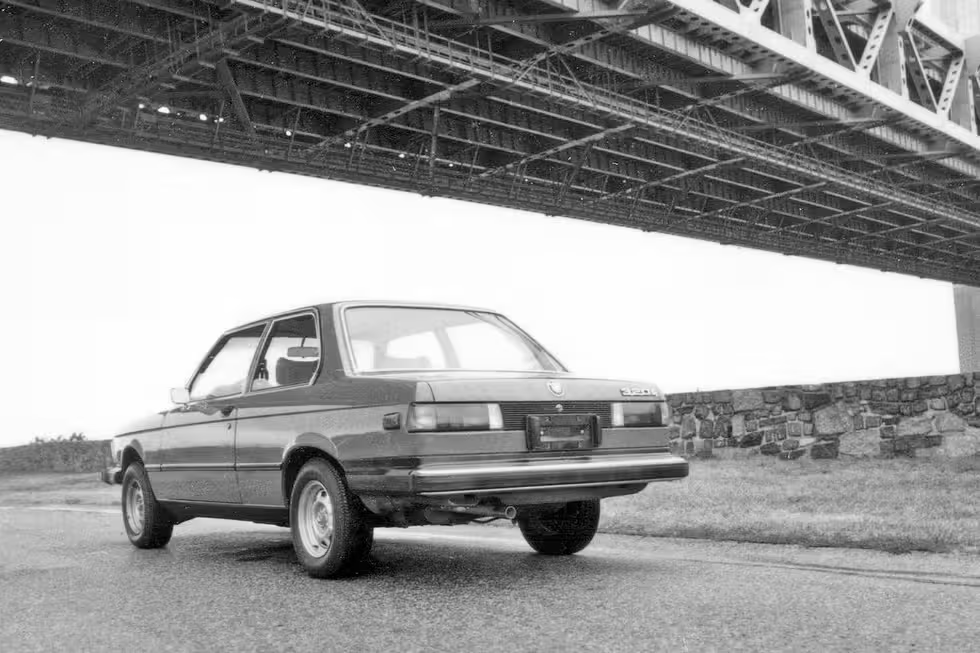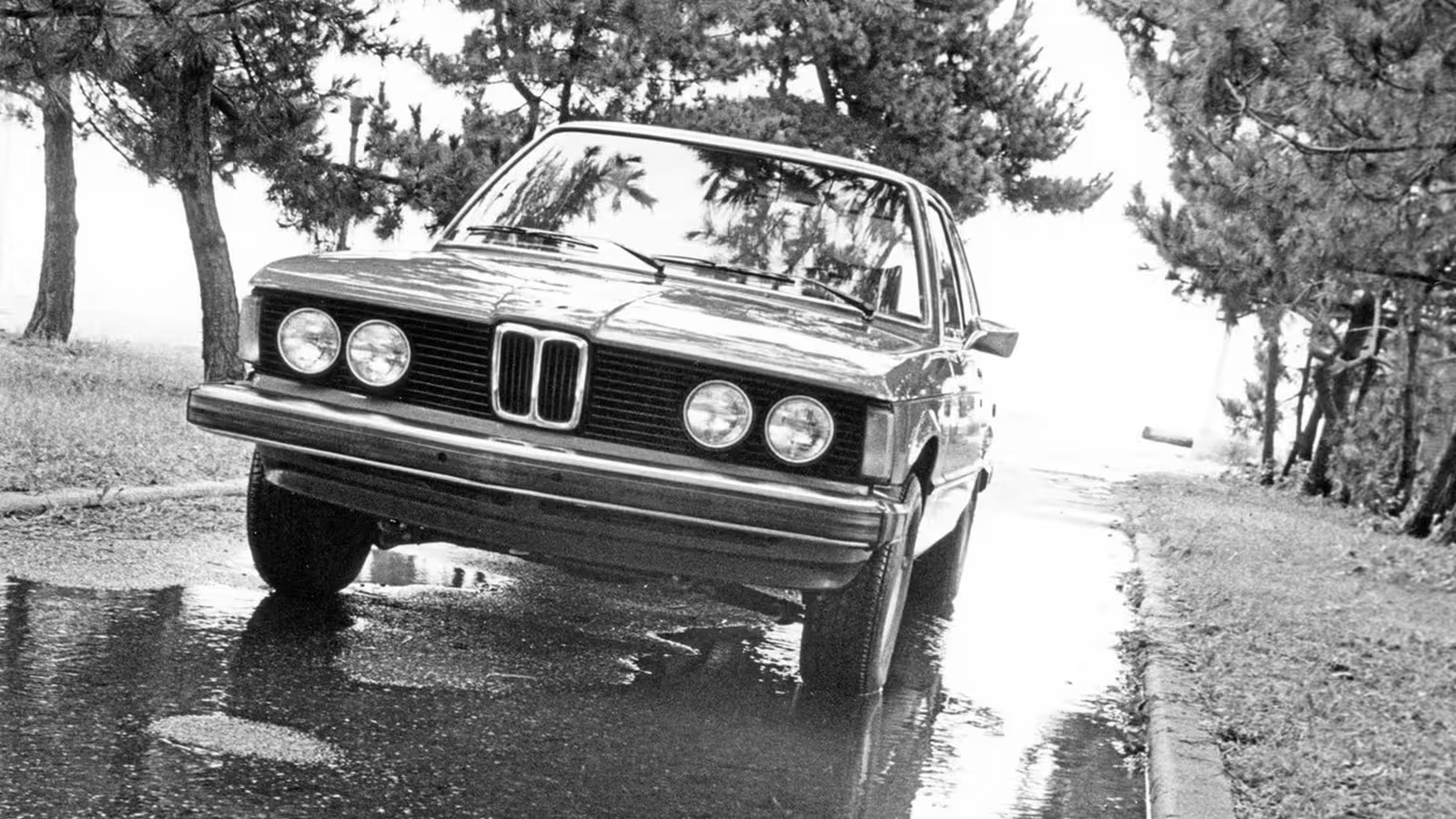9 Minutes
An Introduction to a New Era: The 1977 BMW 320i
The 1977 BMW 320i marked a pivotal moment in automotive history, not only serving as the successor to the much-loved BMW 2002 but also ushering in a new era for the German marque. Far from simply replacing an icon, the 320i elevated expectations for compact sports sedans across the globe, combining athletic performance, refined styling, and a meticulously engineered driving experience rarely seen in its segment at the time.
Exterior Design: Understated Aggression Meets Timeless German Precision
The BMW 320i immediately captures attention with its clean, purposeful lines and beautifully balanced proportions. Our test car radiated in a head-turning yet tasteful Dayglo Red—certainly one of the boldest hues ever to grace a BMW of this class. Its unique shade is the sort you’d want if you needed to be spotted from miles away, and it stands out in a sea of ordinary paint jobs. Yet, the 320i never looks garish; its restrained black and chrome detailing across the window surrounds, grille, and subtle trim points emphasize its sporty, wedge-like stance without resorting to brashness.
BMW’s designers achieved a perfect blend of sophistication and ferocity. The argent-painted steel wheels, with their motorsport-inspired deep offset, signal performance intent even at a standstill. This is a car built to move swiftly—yet does so with class and lasting visual appeal, making it a classic enthusiast’s choice to this day.
Body and Chassis Details
BMW built the 320i on the new E21 platform, a leap forward in both engineering and safety. Sturdier and more crashworthy than previous generations, this body structure signaled BMW’s commitment to durability and refinement without sacrificing agility or driver engagement.

Interior Craftsmanship: Function Meets Comfort
Step inside the BMW 320i, and you’re greeted by a cabin that perfectly balances sportiness with everyday comfort. Our test model featured a vinyl interior in a warm "biscuit" shade—an inviting nod to both German practicality and understated luxury. The design ethos is immediately apparent: the cockpit is driver-centric, with all major controls and instruments arranged for intuitive reach.
The bucket seats are distinctively firm, holding the driver snugly in place whether slicing through back roads or cruising on the interstate. Each seat can be reclined anywhere from bolt-upright to lounge-like repose thanks to easy-to-use side levers, and their shape ensures minimal fatigue on long journeys. Rear passengers, too, benefit from clever packaging—the rear wheels are pushed back on the chassis, making real room for adults without cramping knees or style.
The ergonomics impress: at night, the instrument cluster glows softly in submarine-style red, giving a sense of aviation-grade functionality. BMW’s classic small-diameter steering wheel, slightly dished and perfectly raked, feels just right in the hands—a detail that’s more than a nicety, it’s a fundamental part of the immersive 320i driving experience.
Features such as the crank-operated sunroof demonstrate the brand’s dedication to tactile engagement with the machine. A sunroof that glides open with satisfying precision lets in the right amount of fresh air without excessive wind noise, while simple, stalk-mounted controls for lights, indicators, wipers, and washers are exactly where you’d expect them, exuding German logic and quality.
Engine, Transmission, and Key Specifications
Under the hood, the 320i is powered by a 2.0-liter inline-four engine featuring Bosch K-Jetronic fuel injection—a technology hallmark for the 1970s. Producing an enthusiastic 110 horsepower, it’s paired with a well-tuned four-speed manual gearbox. While the shift action is positive and ideally placed on the floor, enthusiasts may notice a slightly wide ratio between first and second gears, which rewards spirited drivers who enjoy working the gearbox to keep the engine in its lively power band.
Key figures include:
- Engine: 2.0L SOHC inline-four, Bosch K-Jetronic fuel injection
- Power Output: 110 hp
- Transmission: 4-speed manual (optional ZF 3-speed automatic)
- 0–60 mph: ~10.5 seconds
- Fuel Economy: 22.7 mpg (highway, tested average)
- Brakes: Front ventilated disc/rear drum, power-assisted
- Suspension: MacPherson strut front, semi-trailing arm rear
- Curb Weight: Approx. 2,400 lbs
- Skidpad Grip: 0.71 g
The improved brake system, featuring larger ventilated discs at the front, provides sure-footed stopping power—coming to a halt from 70 mph in just 218 feet, impressive for its era and ensuring high safety standards.
On the Road: Real-World Driving Impressions
BMW engineered the 320i for genuine enthusiasts, and this is immediately evident behind the wheel. During our extensive test—spanning over 500 miles from New York to Ohio through pouring rain and varying conditions—the 320i delivered both comfort and confidence. Cruising steadily at 75 mph, the 320i never missed a beat: the engine hummed smoothly, and road and wind noise were commendably subdued for a compact European sports sedan.
Despite lacking modern luxuries like air conditioning, a radio, or even power steering, their absence was barely noticed—a testament to the car’s mechanical clarity and inherent enjoyment. The directness of the controls and feedback from the chassis make the 320i feel alive in your hands, transforming every drive into a memorable event rather than routine transportation.
One of the car’s true strengths is its ability to settle into a comfortable cruise at high speeds. Whether passing slower traffic at 60 mph or stretching its legs on the freeway, the 320i’s inline-four remains refined, with its best performance delivered north of 3,000 rpm. If pushed too low, the engine can feel a little hesitant, but a quick downshift puts you back in the power zone. The sweet spot of the BMW 320i lies between 60 and 80 mph, where its sporting intentions shine without ever feeling strained or noisy.
Climate Control and Usability
BMW improved the heating and ventilation system significantly over the outgoing 2002. The 320i brings 89% more fresh air into the cabin (or 42% more heat, depending on your needs), and the system proved superb in both sweltering and downpour conditions. On a muggy trek across Ohio, we opened the sunroof and rear pop-out windows, enjoying the fresh air without buffeting or intrusive noise. When sudden rain required rapid defogging, the system cleared the windshield almost instantly—rare among European cars of the era.
Luggage Room, Practicality, and Build Quality
The practicality of the BMW 320i extends to its spacious trunk. Swallowing an impressive amount of luggage for a long trip, the rear compartment also managed to fit antique finds, large framed artwork, and more—demonstrating the 320i’s flexibility as both a touring and daily-driving machine. Attention to detail includes a neatly organized toolkit under the trunk lid, affirming BMW’s reputation for providing essentials for drivers who appreciate a well-prepared vehicle.
Build quality, fit, and finish of the 320i are consistently top-tier, with solid door closures, durable interior materials, and an overall structure designed to stand the test of time. This was a car properly engineered for discerning drivers expecting both performance and longevity.
Handling: Performance and Road Dynamics
Steering is deliberate at 4.0 turns lock-to-lock, delivering precision and confidence, though less urgent than some may expect of a true sports coupe. Combined with the softly-tuned ride and a higher driving position, the 320i may feel a tad upright at the limit on a handling track, with the semi-trailing arm rear suspension sometimes stepping wide—but none of this disrupts real-world driving. On the everyday road, the BMW’s chassis is composed, grippy, and balanced, offering a blend of dynamic prowess and driver confidence rarely matched by the competition in the late 1970s.
Comparisons: 320i vs. Competitors and Predecessors
While the legendary BMW 2002 set the stage for agile, affordable sports sedans, the 320i pushes the formula further. The new 3 Series (E21) platform brings greater refinement, improved crash safety, and quieter, more sophisticated road manners, outpacing rivals like the Alfa Romeo Alfetta and Audi 80 in both driving engagement and build quality.
When compared to larger American cars such as the Ford Thunderbird, the 320i often feels even roomier, more responsive, and, critically, far more fuel efficient. The 320i delivered a solid 22.7 mpg during testing (with spirited highway driving), saving costs while maintaining a fun-to-drive character.
Market Positioning and the BMW Philosophy
In the late 1970s, the luxury and sports sedan market began to shift. The BMW 320i exemplified the industry’s movement from utilitarian transportation to sophisticated, enthusiast-focused machines designed to satisfy discerning drivers—and buyers willing to pay a premium for engineering excellence. Priced around $8,000 at launch, the 320i certainly commanded a premium, but for many, its charm, precision, and driving pleasure justified the outlay.
At a time when safety and emissions regulations threatened to dull the excitement from smaller cars, the BMW 320i stood out as evidence that compact, efficient vehicles could still be genuinely exhilarating, stylish, and luxurious. Its presence signaled an evolution away from raw racer-for-the-road simplicity towards a holistic, total-driving experience.
Legacy: Setting the Standard for Compact Sports Sedans
The BMW 320i’s enduring appeal lies in its successful blending of classic BMW values—brilliant handling, strong brakes, balanced power, and solid craftsmanship—with newfound maturity and everyday usability. The E21 generation addressed the high benchmarks established by its predecessors, refining and updating every major component, from more capable brakes to superior noise and vibration suppression.
Put simply, the 320i proved you didn’t have to settle for mediocrity in the pursuit of economy, safety, and practicality. It was, and remains, a tangible rebuttal to the belief that compliance with regulations must result in dull or uninspiring automobiles. As the world discovered, BMW’s new 3 Series was ready not just for the next decade, but to define a new standard for compact premium sedans globally.
Ownership Experience: What Makes the 320i Stand Out
Owners of the BMW 320i quickly grew enamored with its reliability, comfort, and effortless driving enjoyment. The steering, brakes, and feedback from the road provide constant reminders of the car’s heritage. It offers real value for money, distinguishing itself from practically all competitors by never compromising its core philosophy for short-term trends or cost-cutting.
The BMW 320i was expensive by compact car standards, but its enduring desirability, driving pleasure, and engineering integrity have since proven that it was worth every cent. Today, it stands as the original building block for a lineage of BMW 3 Series models that dominate the luxury sports sedan market.
Conclusion: The BMW 320i—Where Performance, Comfort, and Value Meet
Ultimately, the 1977 BMW 320i is more than just a footnote in automotive history—it is a cornerstone for car enthusiasts seeking the perfect blend of sporty driving, practicality, and German precision. Even decades later, its allure endures among purists and collectors alike, symbolizing the moment when BMW truly arrived as the leader in compact sports sedans. With its masterful engineering and captivating road presence, the 320i is proof that driving excitement and smart design never go out of style.
Source: caranddriver



Comments